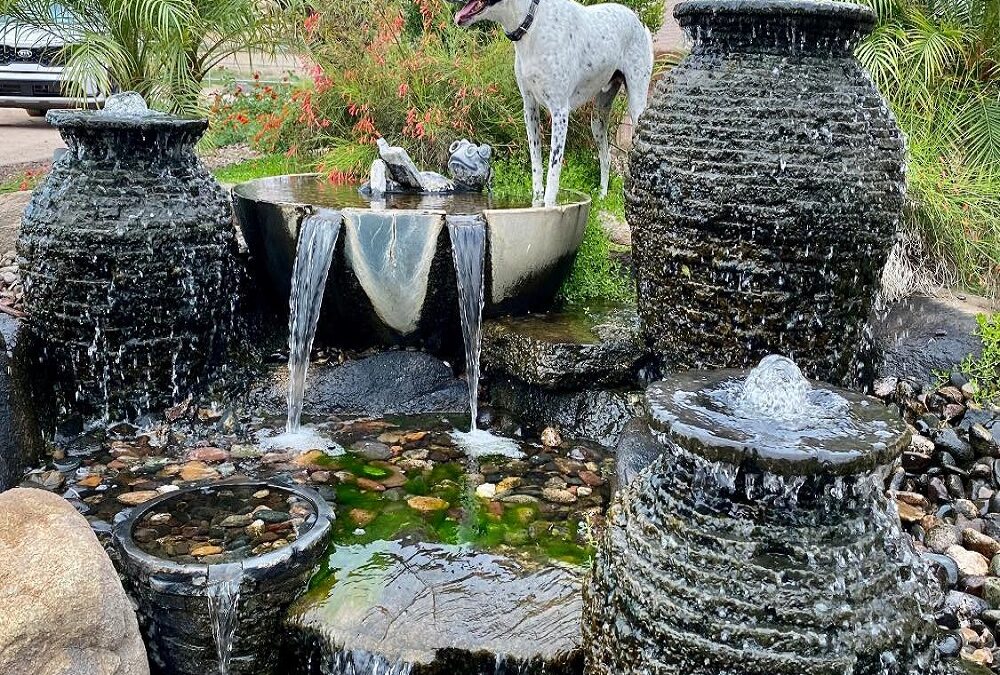A water fountain is an outdoor piece that can provide a sense of serenity and calmness to your home. Though beautiful, this piece of art can become increasingly unsightly if proper maintenance is neglected.
Following is a list of FAQs regarding water fountain installation and maintenance best practices from the team at Pondscapes.
Does the location of the fountain matter for maintenance?
A reliable spot with less foot traffic will help ensure less dust and subsequent maintenance. Sunlight and trees are essential factors to consider as dry leaves falling from trees into the fountain will create an additional maintenance task.
Proper sunlight is necessary to help eliminate algae growth and help your water feature remain pristine. The Patio or garden would be a perfect choice for a fountain.
How do you maintain or increase the life of your fountain?
Regularly removing debris like leaves, dust, or sticks from the water fountain helps ensure that your fountain continues running smoothly.
Your fountain’s pumps are an essential part of ensuring proper functionality. By routinely removing debris, you can lengthen your fountain’s pumps lifespan and cut down on technical maintenance. Otherwise, you may begin to experience problems like clogging or other obstructions.
How can I stop my fountain from leaking?
If a pinhole leak or crack is visible at the bottom of the stone or fiberglass fountain, experts advise applying Silicone on the base to close it. If the crack is not visible, you should let the fountain sit ideally for a week and the leak may recover.
If any issue persists after this, you need to get in touch with fountain maintenance experts who will be sure to expertly repair any potential damage to your fountain.
Why do I see the white residue in my water fountain?
The white residue (or white scale) is the calcium that builds up from hard water. Rubbing it with a white vinegar solution can help remove these residues.
Does winter affect my water fountain?
Leaving your fountain water unattended under freezing water in harsh winters can lead to extension and compression of the fountain base as water expands when it begins to freeze. This may lead to cracks and water leaks.
Covering your fountain can help you avoid such damages by offering it a layer of protection from the elements.
What should I use to clean my fountain?
Different types of fountain material such as copper, ceramic, and stainless steel require different substances for cleaning.
• A Copper-made fountain requires a high-quality cleaner with a soft cloth
• An ideal soapy water and a soft cloth can help you clean a ceramic made fountain
• Stainless-steel fountains demand a suitable stainless-steel solution along with a dry cloth.
Should I hire a professional?
Absolutely. Fountain maintenance is a time-consuming task and if you don’t have enough time or expertise in this field, you should hire a professional. Professionals, like Pondscapes, have the technical know-how to not only keep your water feature running perfectly, but can also identify potential issues before they snowball into larger problems.
What substances can help clean my fountain?
You can use a spoonful of hydrogen peroxide for cleaning your fountain as it helps terminate the growth of unwanted plants and algae in the water. You can also consult an expert for additional advice.
Is it possible to add fish to my fountain?
Adding fish immediately after the fountain’s installation is harmful as new fountains discharge minerals in the water that are toxic to aquatic life. You can add fish like Koi after a few months of usage. Again, in this situation it’s best to consult with experts.
Conclusion
Pondscapes provides reliable services for fountain installation in Scottsdale and strives to create your dream water fountain system. With expert advice, easy installation, maintenance, and progressive suggestions, we have everything covered for you. Contact us at (415) 573-3592.



Recent Comments